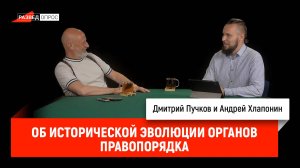
 3:05
3:05
2025-09-09 21:33
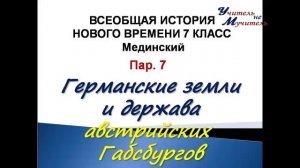
 20:22
20:22

 20:22
20:22
2025-09-23 07:32
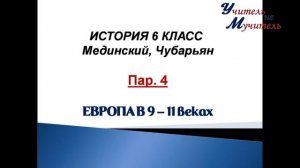
 13:47
13:47

 13:47
13:47
2025-09-23 07:34

 27:58
27:58

 27:58
27:58
2025-09-20 10:00
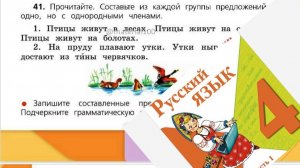
 16:51
16:51

 16:51
16:51
2025-09-20 19:43
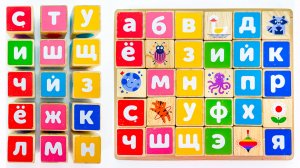
 7:38
7:38

 7:38
7:38
2025-09-18 13:30
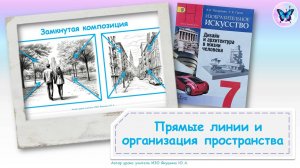
 9:08
9:08

 9:08
9:08
2025-09-14 19:58
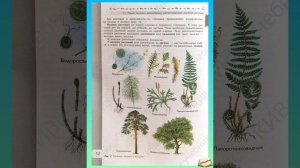
 6:13
6:13

 6:13
6:13
2025-09-14 11:02

 4:18
4:18

 4:18
4:18
2025-09-21 11:49
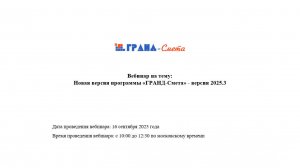
 2:38:53
2:38:53

 2:38:53
2:38:53
2025-09-16 10:00

 21:09
21:09

 21:09
21:09
2025-09-05 15:00

 7:24
7:24

 7:24
7:24
2025-09-08 13:25

 29:48
29:48

 29:48
29:48
2025-09-05 14:16
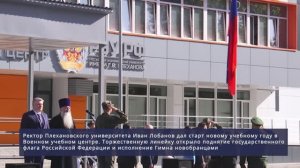
 1:02
1:02

 1:02
1:02
2025-09-12 15:09

 47:46
47:46

 47:46
47:46
2025-09-20 16:01

 5:19
5:19

 5:19
5:19
2025-09-21 20:27

 10:27
10:27

 10:27
10:27
2025-09-17 19:30

 2:14
2:14
![Taylor Swift - The Fate of Ophelia (Official Video 2025)]() 3:58
3:58
![Любовь Попова - Прощай (Премьера клипа 2025)]() 3:44
3:44
![Наталья Влади - А я такая (Премьера клипа 2025)]() 2:21
2:21
![Жалолиддин Ахмадалиев - Тонг отгунча (Премьера клипа 2025)]() 4:44
4:44
![Азиз Абдуллох - Аллохнинг айтгани булади (Премьера клипа 2025)]() 3:40
3:40
![MILEN - Украду тебя (Премьера 2025)]() 3:40
3:40
![ИЮЛА - Ты был прав (Премьера клипа 2025)]() 2:21
2:21
![Игорь Крутой - Зонтик (Премьера клипа 2025)]() 4:00
4:00
![Фати Царикаева - Стамбул (Премьера клипа 2025)]() 2:57
2:57
![ARTEE - Лети (Премьера клипа 2025)]() 3:13
3:13
![Фаррух Хамраев - Отажоним булсайди (Премьера клипа 2025)]() 3:08
3:08
![MEDNA - Алё (Премьера клипа 2025)]() 2:28
2:28
![Сергей Сухачёв - Розовый туман (Премьера клипа 2025)]() 3:13
3:13
![5sta Family - Антидот (Премьера клипа 2025)]() 3:33
3:33
![MIA BOYKA - А он такой (Премьера клипа 2025)]() 2:24
2:24
![Бонухон & Сардорбек Машарипов - Шанс (Премьера клипа 2025)]() 3:28
3:28
![ARTIX, SHAXO - Дождь (Премьера клипа 2025)]() 5:23
5:23
![Рейсан Магомедкеримов - Забываю (Премьера клипа 2025)]() 3:20
3:20
![Ольга Бузова - Не надо (Премьера клипа 2025)]() 3:15
3:15
![Азимжон Сайфуллаев - Тупрок буламиз (Премьера клипа 2025)]() 4:38
4:38
![Фантастическая четвёрка: Первые шаги | The Fantastic Four: First Steps (2025)]() 1:54:40
1:54:40
![Заклятие 4: Последний обряд | The Conjuring: Last Rites (2025)]() 2:15:54
2:15:54
![Улица Страха: Королева выпускного | Fear Street: Prom Queen (2025)]() 1:30:05
1:30:05
![Путь рыцаря | A Knight's War (2025)]() 1:43:53
1:43:53
![M3GAN 2 | M3GAN 2.0 (2025)]() 2:00:03
2:00:03
![Долина эха | Echo Valley (2025)]() 1:44:37
1:44:37
![Пойман с поличным | Caught Stealing (2025)]() 1:46:45
1:46:45
![F1 (2025)]() 2:35:53
2:35:53
![Блиц | Blitz (2024)]() 2:00:30
2:00:30
![Моя мертвая подруга Зои | My Dead Friend Zoe (2024)]() 1:42:40
1:42:40
![Вне юрисдикции | Exterritorial (2025)]() 1:49:09
1:49:09
![Финикийская схема | The Phoenician Scheme (2025)]() 1:41:27
1:41:27
![Голый пистолет | The Naked Gun (2025)]() 1:26:24
1:26:24
![Синг-Синг | Sing Sing (2024)]() 1:46:50
1:46:50
![Диспетчер | Relay (2025)]() 1:51:56
1:51:56
![Милая вилла | La Dolce Villa (2025)]() 1:39:20
1:39:20
![Тот самый | Him (2025)]() 1:36:20
1:36:20
![Стив | Steve (2025)]() 1:33:34
1:33:34
![Богомол | Samagwi (2025)]() 1:53:29
1:53:29
![Счастливчик Гилмор 2 | Happy Gilmore (2025)]() 1:57:36
1:57:36
![Енотки]() 7:04
7:04
![Тёплая анимация | Новая авторская анимация Союзмультфильма]() 10:21
10:21
![Супер Зак]() 11:38
11:38
![Зебра в клеточку]() 6:30
6:30
![Чуч-Мяуч]() 7:04
7:04
![Котёнок Шмяк]() 11:04
11:04
![Рэй и пожарный патруль Сезон 1]() 13:27
13:27
![Пиратская школа]() 11:06
11:06
![Тодли Великолепный!]() 3:15
3:15
![Синдбад и семь галактик Сезон 1]() 10:23
10:23
![Карли – искательница приключений. Древнее королевство]() 13:00
13:00
![Папа Супергерой Сезон 1]() 4:28
4:28
![Сборники «Приключения Пети и Волка»]() 1:50:35
1:50:35
![Приключения Тайо]() 12:50
12:50
![МиниФорс]() 0:00
0:00
![Врумиз. 1 сезон]() 13:10
13:10
![Команда Дино Сезон 1]() 12:08
12:08
![Минифорс. Сила динозавров]() 12:51
12:51
![Команда Дино Сезон 2]() 12:31
12:31
![Псэмми. Пять детей и волшебство Сезон 1]() 12:17
12:17

 2:14
2:14Скачать видео
| 256x144 | ||
| 640x360 | ||
| 1280x720 |
 3:58
3:58
2025-10-17 11:48
 3:44
3:44
2025-10-21 09:25
 2:21
2:21
2025-10-14 11:07
 4:44
4:44
2025-10-19 10:46
 3:40
3:40
2025-10-18 10:34
 3:40
3:40
2025-10-15 11:15
 2:21
2:21
2025-10-18 10:16
 4:00
4:00
2025-10-18 10:19
 2:57
2:57
2025-10-15 10:54
 3:13
3:13
2025-10-18 09:47
 3:08
3:08
2025-10-18 10:28
 2:28
2:28
2025-10-21 09:22
 3:13
3:13
2025-10-24 12:18
 3:33
3:33
2025-10-22 13:57
 2:24
2:24
2025-10-14 12:10
 3:28
3:28
2025-10-24 11:20
 5:23
5:23
2025-10-14 11:01
 3:20
3:20
2025-10-16 11:19
 3:15
3:15
2025-10-18 10:02
 4:38
4:38
2025-10-23 11:27
0/0
 1:54:40
1:54:40
2025-09-24 11:35
 2:15:54
2:15:54
2025-10-13 19:02
 1:30:05
1:30:05
2025-06-16 20:00
 1:43:53
1:43:53
2025-07-16 20:59
 2:00:03
2:00:03
2025-07-19 19:23
 1:44:37
1:44:37
2025-08-03 10:47
 1:46:45
1:46:45
2025-10-02 20:45
 2:35:53
2:35:53
2025-08-26 11:45
 2:00:30
2:00:30
2025-01-18 21:22
 1:42:40
1:42:40
2025-05-16 16:49
 1:49:09
1:49:09
2025-08-13 10:53
 1:41:27
1:41:27
2025-06-30 07:40
 1:26:24
1:26:24
2025-09-03 13:20
 1:46:50
1:46:50
2025-02-11 12:05
 1:51:56
1:51:56
2025-09-24 11:35
 1:39:20
1:39:20
2025-03-21 12:00
 1:36:20
1:36:20
2025-10-09 20:02
 1:33:34
1:33:34
2025-10-08 12:27
 1:53:29
1:53:29
2025-10-01 12:06
 1:57:36
1:57:36
2025-08-21 17:43
0/0
 7:04
7:04
2022-03-29 18:22
 10:21
10:21
2025-09-11 10:05
2021-09-22 22:07
 6:30
6:30
2022-03-31 13:09
 7:04
7:04
2022-03-29 15:20
 11:04
11:04
2023-05-18 16:41
2021-09-22 23:51
 11:06
11:06
2022-04-01 15:56
 3:15
3:15
2025-06-10 13:56
2021-09-22 23:09
 13:00
13:00
2024-11-28 16:19
2021-09-22 21:52
 1:50:35
1:50:35
2025-07-15 11:13
 12:50
12:50
2024-12-17 13:25
 0:00
0:00
2025-10-25 05:00
2021-09-24 16:00
2021-09-22 22:29
 12:51
12:51
2024-11-27 16:39
2021-09-22 22:40
2021-09-22 22:23
0/0

